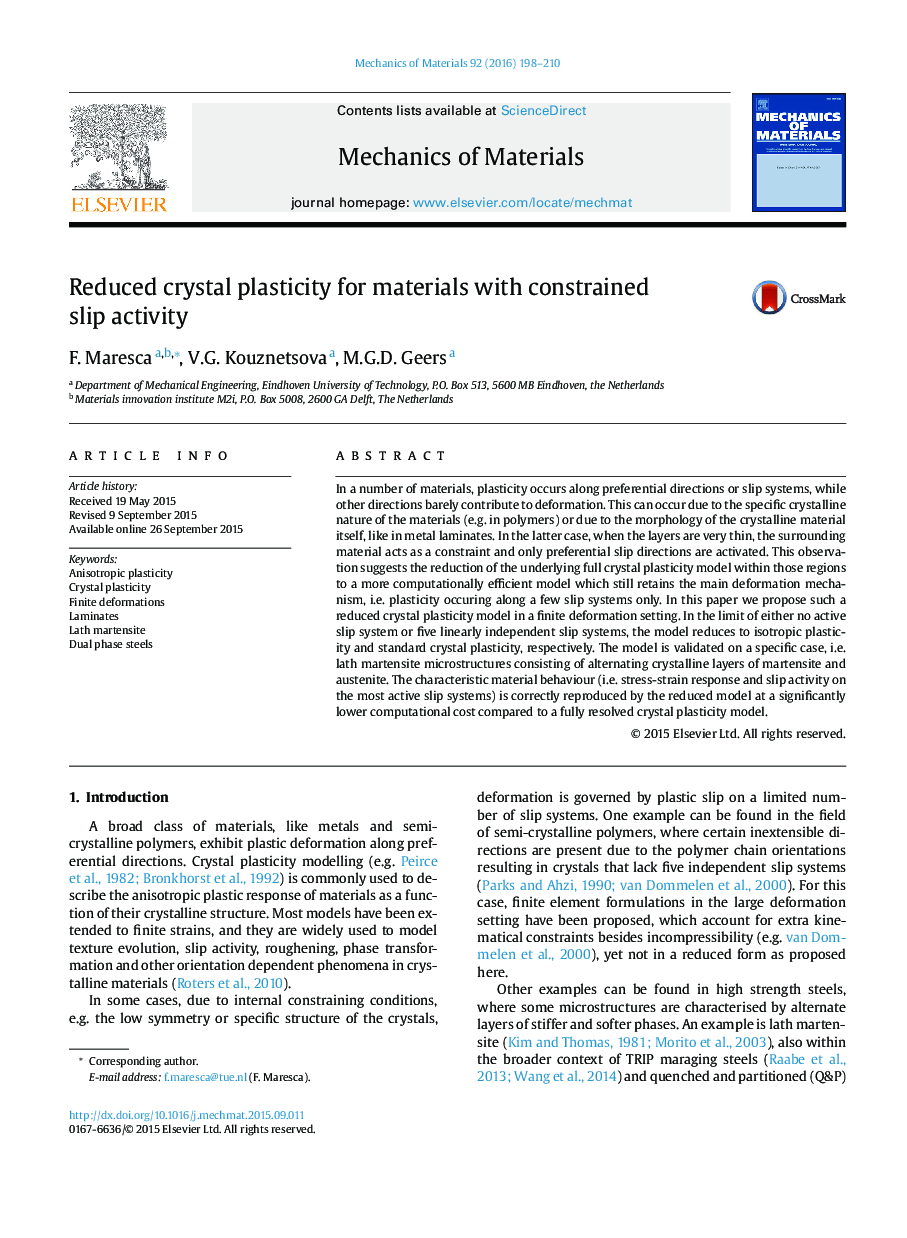| Article ID | Journal | Published Year | Pages | File Type |
|---|---|---|---|---|
| 797491 | Mechanics of Materials | 2016 | 13 Pages |
•A framework combining finite strain crystal plasticity with isotropic plasticity is proposed.•The most active slip systems are resolved with crystal plasticity, while the remaining directions are modeled with isotropic plasticity.•The implementation, e.g. in finite element codes, reduces to a simple superposition of isotropic and crystal plasticity parts.•Validation on martensite models show that the main physics of the full model is preserved with considerable computational saving (5 to 10 times).
In a number of materials, plasticity occurs along preferential directions or slip systems, while other directions barely contribute to deformation. This can occur due to the specific crystalline nature of the materials (e.g. in polymers) or due to the morphology of the crystalline material itself, like in metal laminates. In the latter case, when the layers are very thin, the surrounding material acts as a constraint and only preferential slip directions are activated. This observation suggests the reduction of the underlying full crystal plasticity model within those regions to a more computationally efficient model which still retains the main deformation mechanism, i.e. plasticity occuring along a few slip systems only. In this paper we propose such a reduced crystal plasticity model in a finite deformation setting. In the limit of either no active slip system or five linearly independent slip systems, the model reduces to isotropic plasticity and standard crystal plasticity, respectively. The model is validated on a specific case, i.e. lath martensite microstructures consisting of alternating crystalline layers of martensite and austenite. The characteristic material behaviour (i.e. stress-strain response and slip activity on the most active slip systems) is correctly reproduced by the reduced model at a significantly lower computational cost compared to a fully resolved crystal plasticity model.
